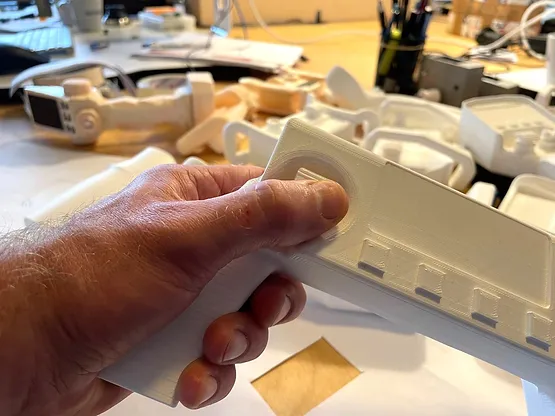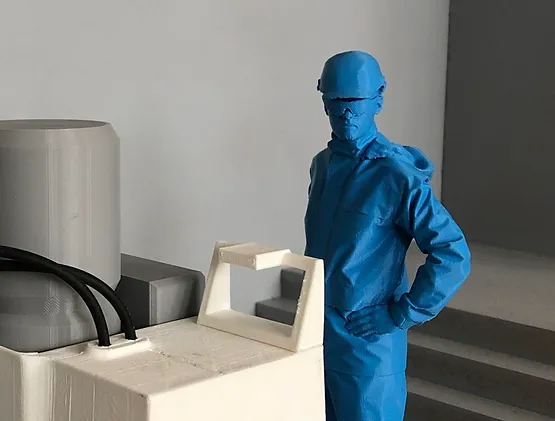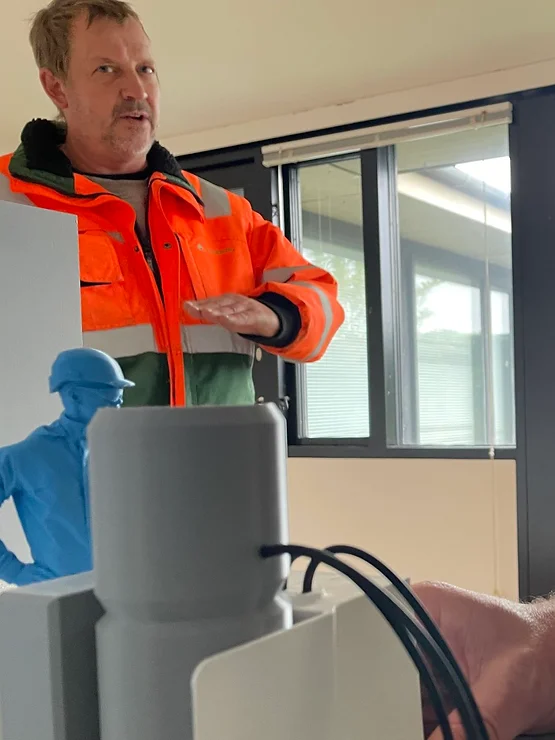The versatility of 3D printing has become an integral part of our toolbox. Right now, we’re using it in two very different ways on current projects.
3D printers have been a part of our toolbox for a couple of years at this point, but we still keep finding new use-cases for the technology – not least because it’s getting better and faster.
Right now, we use it in two pretty different ways in two of our current projects, which we thought would be fun to share with you:
1) Shaping a remote controller
Our Conhoist-system is in its final development stage, and we’re currently working on redesigning the remote for the traverse crane; what is the interface going to look like, where should the buttons be located and what would the most ergonomic shape be?
We’ve made a wealth of iteration of the new design, and we 3D print them all in order to test them in the hands of future users of the system. This way – with a physical representation in hand – it’s much easier for the users to evaluate ergonomics, the shape and how easy the user interface is to handle.
10 years ago, we would have had to cut the dummies out of foam – which would both be way more time-consuming and way less accurate.
Just a few years ago, 3D printing them would also have been quite cumbersome. But with our new 3D printer it’s faster and more reliable; we simple press print on the iterations and let the printer do its work.

We’ve recently started working on a new tool for the construction sector, and we currently have four different concepts to solve the problem we’re looking at.
As always, we want to learn as much as possible from end-users during this stage of development, which means we’re hosting workshops with contractors to get their feedback. And in order to communicate our thought about each concept as efficiently as possible, we’ve created four 1:10 scale models of them – with the help of our 3D printer.
This means we can show them a room with a Barbie-sized builder alongside a shrunken replica of each product/system. Which makes it super easy to demonstrate the entire workflow of each concept. And with precise communication we barely need to explain anything – the contractors understand the idea instinctive and are immediately giving us feedback.
Drawings are great in the early stage, but thanks to 3D printing we bring in a more spatial understanding which reduces misunderstandings.


